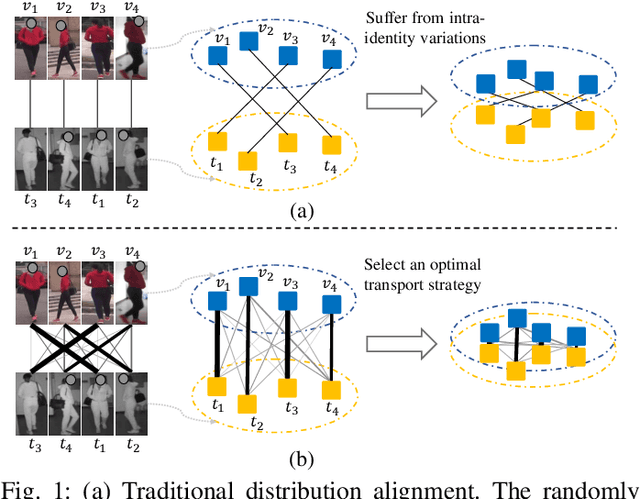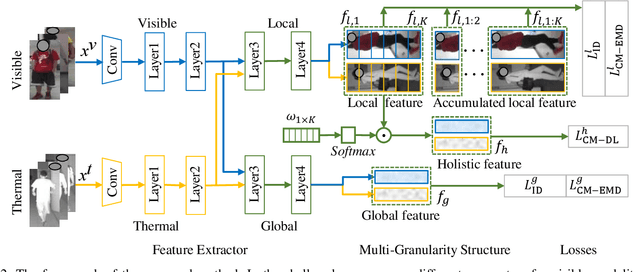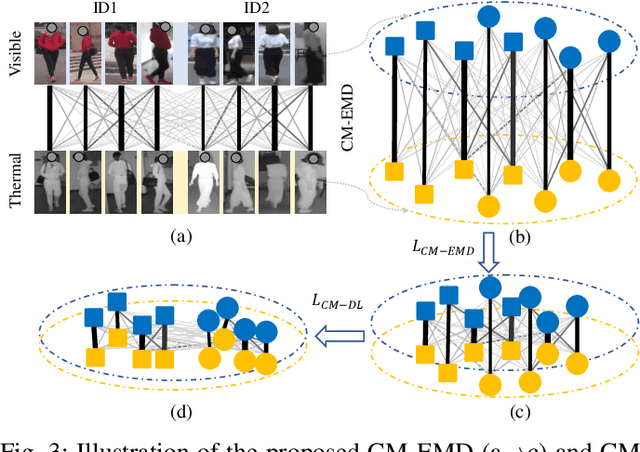Cross-Modality Earth Mover's Distance for Visible Thermal Person Re-Identification
Paper and Code
Mar 03, 2022



Visible thermal person re-identification (VT-ReID) suffers from the inter-modality discrepancy and intra-identity variations. Distribution alignment is a popular solution for VT-ReID, which, however, is usually restricted to the influence of the intra-identity variations. In this paper, we propose the Cross-Modality Earth Mover's Distance (CM-EMD) that can alleviate the impact of the intra-identity variations during modality alignment. CM-EMD selects an optimal transport strategy and assigns high weights to pairs that have a smaller intra-identity variation. In this manner, the model will focus on reducing the inter-modality discrepancy while paying less attention to intra-identity variations, leading to a more effective modality alignment. Moreover, we introduce two techniques to improve the advantage of CM-EMD. First, the Cross-Modality Discrimination Learning (CM-DL) is designed to overcome the discrimination degradation problem caused by modality alignment. By reducing the ratio between intra-identity and inter-identity variances, CM-DL leads the model to learn more discriminative representations. Second, we construct the Multi-Granularity Structure (MGS), enabling us to align modalities from both coarse- and fine-grained levels with the proposed CM-EMD. Extensive experiments show the benefits of the proposed CM-EMD and its auxiliary techniques (CM-DL and MGS). Our method achieves state-of-the-art performance on two VT-ReID benchmarks.
 Add to Chrome
Add to Chrome Add to Firefox
Add to Firefox Add to Edge
Add to Edge